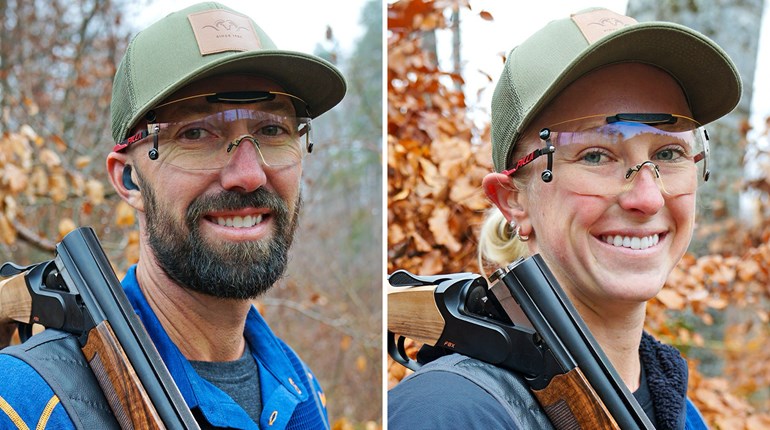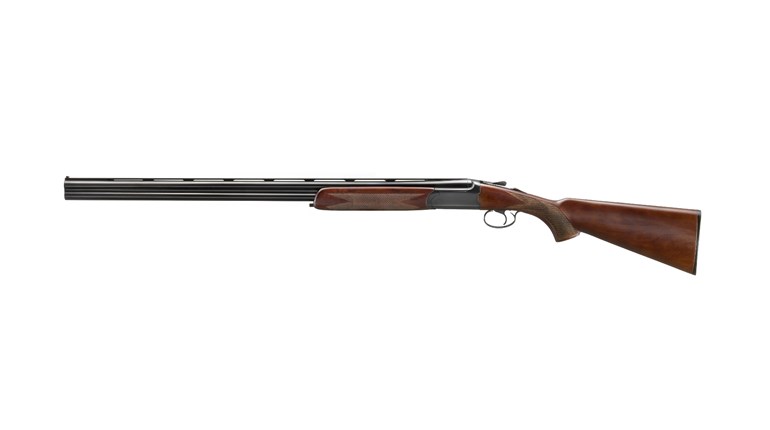
The Germans thought the Winchester Model 1897 “trench gun” so nasty and underhanded in World War I, they petitioned the U.S. government to ban it from warfare.
Keep in mind, this act of “humanitarianism” came from the fine folks who introduced such niceties as chlorine gas to the battlefield, then had the gall to whine about John Moses Browning’s Model 1897 (M97) hammer-fired, repeating duck gun when it was turned on them. Sure, it could fire six shotshells—five in the mag, one in the pipe—as fast as a doughboy could hold down the trigger and pump, but a violation of the Hague Convention it was not. (Note: U.S. Army BG Samuel T. Ansell fired a memo back to the Germans basically telling them to suck eggs.)
The M97 was an improved version of Browning’s M1893 shotgun. It featured a beefier frame made to handle 2 3/4-inch shells and a side- ejection port less prone to jamming compared to top ejection. It employed a slide lock that prevented it from being pumped—or the action coming open—before the chambered shell was fired. Recoil from the fired round caused the action to release so it could then be pumped.
This feature made the shotgun safer, reduced jamming and gave it that feeling of almost pumping itself during recoil. It lacked a trigger disconnect so it could be “slam fired,” meaning the hammer would fall on the shell in the chamber if the trigger was held down when the action was slammed shut. The stock was made longer and straighter to make it more conducive to instinctive shooting. It was reliable, pointable, handy and deadly on game. A simple switch from birdshot to buckshot made it deadly on enemies.
In 1898, Winchester modified its standard 28- and 30-inch-barrel hunting versions by shortening the tube to 20 inches, calling it the Riot Model and selling it to law enforcement and U.S. troops fighting in the Philippines. Then, in 1917 with the ongoing world war, our Soldiers quickly felt a need for such an arm in the trenches, so Winchester added a perforated barrel shroud, sling swivels and a lug to which a bayonet could be attached. It was aptly named the Trench Model.
It was almost the perfect gun for CQB inside the trench, with a nine-pellet, .33-caliber buckshot load that could sweep corridors like a broom and be wielded like a cutlass when the enemy spilled into the dirt halls. It’s rumored that trap- and skeet-savvy doughboys were posted at the corners of the trenches to shoot down grenades lobbed by enemy soldiers before they landed in the trench. Some historians doubt this, however, citing a lack of bird-hunting ammunition during the war, but I’m not so sure.
One of the few photos from the war showing doughboys shooting M97s was taken on a trap and skeet range with what appears to be birdshot loads. Regardless, there’s little doubt that a skilled wing-shooter armed with birdshot or buckshot and a natural-pointing shotgun could hit a slow-moving grenade. Whether it would detonate the grenade in midair is another question perhaps best left up to the staff at “MythBusters.”
Curiously, there are precious few photos of the M97 in battle because, most likely, GEN Pershing or his staff recognized the potential PR stink it could cause after the German protest and therefore ordered wartime photos of it censored. At least that’s what American Rifleman author and historian Tom Laemlein believes, and he should know because he’s been looking for World War I photos of the M97 for more years than I’ve been around. Conspiracy theorists be damned, it’s a fact the gun made a showing in “The Great War” as evidenced by purchase records, the German protest and the vivid recollections of Soldiers who used them and enemies who faced them.
But, the scattergun wasn’t without flaw, albeit none the fault of John M. Browning. You see, most shells for it—and every shotgun at the time—were made of paper, and paper hulls were like human feet in the dank living conditions of the trench; they’d swell and crack and get so deformed that they wouldn’t feed properly in the shotgun’s chamber. So, troops called for full-brass shotshells, but they were expensive, and as a result their calls were unanswered. (It should be noted that rifle, pistol and mortar cases were all made of metal, so I’m not sure why it was that much of an issue to produce all-brass shotshell cases as well. Regardless, brass shells were issued during World War II; it would be another five decades before plastic-hulled shells were introduced.)
One of the most-notable refinements came in 1912 with Winchester’s Model 12 shotgun that moved the M97’s external hammer to the inside. From then until 1964, Winchester sold more than 2 million Model 12s, largely to the sporting market, but also trench models for the military, including during World War II, Korea, Vietnam and myriad special operations.
To keep up with demand of wartime in the mid-1900s, the U.S. government contracted other firms such as Ithaca, Remington and Stevens to produce updated facsimiles of the Model 12—and therefore descendants of the M97. These included Ithaca’s 37, Remington’s 870 and Stevens’ M77 and M520-30. Without a doubt, the M97 repeating shotgun left an indelible mark on battlefields worldwide, and the same holds true today, albeit with refined mechanisms, features and accoutrements that time affords.
In all, around 1 million M97s—mostly in hunting configurations—were made from 1897 to 1957, but its legacy marches on in homes, gun stores, trap ranges, duck blinds, militaries and bedside closets all around this country. Most shotguns still load, fire and repeat in the same manner designed by Browning in 1897. The takedown version of the M97—where the barrel could be removed from the receiver by unscrewing the fore-end cap—formed the design bases of the venerable Remington 870 and Mossberg 500, the gold standards of combat and home-defensive shotguns for the last 50 years.
Fact is, if you had to defend your home tonight and were faced with using a 120-year-old M97 with standard buckshot, you’d still be well-prepared to take on all comers. I can scarcely think of another piece of technology, with the exception of perhaps a hammer or shovel, that can boast the same enduring success.



































